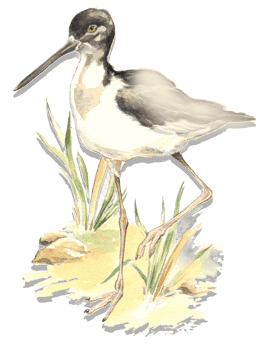|
The saltworks
are fragile, semi-artificial ecosystems. Apart from their economic
role as industrial places where salt is produced, they form very
interesting wetlands, where various species of plants and animals
can be observed. Many tourists are interested in these species and
because of their great interest in nature and ecology they are called
ecotourists. Furthermore, there are many scientists who make research
on these species and their habitats.
Apart
from their economic and ecological value, saltworks are very interesting
places, for social and cultural reasons, since there are lots
of myths and traditions related to their history. The natural,
ecological and cultural characteristics of the salinas are the
reasons for the development of various types of tourism. This
kind of tourism is considered soft, since it does not destroy
the environment, and also contributes to its protection. The salina’s
environment (as a nature and tourist resource) should maintain
its high quality to be attractive for the tourists and useful
for the birds. Thus, tourism development should be controlled
and, under the principles of sustainability, help to preserve
the natural environment and the landscape.
The saltworks
are places where various kinds of tourism can be developed. There
are many soft forms of tourism, such as ecotourism, agrotourism,
cultural, gastronomical, educational, walking, sport tourism, or
even conference tourism, that can be developed in the saltworks.
Ecotourism
is a special kind of tourism that is related to nature and the environment.
Tourists, who are interested in nature, ecology and environment,
visit the saltworks where they can learn about the wetlands and
the special ecosystem that is formed in the salinas and watch the
various bird species (flamingos, avocets, black-winged stilts etc)
that gather at the same place. Ecotourism is related to nature and
trekking tourism. Tourists spend most of the day around the saltworks,
walking, in order to find interesting species. A well-organized
network of paths and trails would help them in their tours. Hereby
it is also easy to develop sport tourism. The paths can be used
for mountain bike tours as well. The saltworks are often situated
near the seashore. This could be exploited for the development of
soft sea sports, such as rowing and sailing.
Another
form of tourism, which could be related to the saltworks, is agrotourism.
Tourists live in a farm, take part in the agricultural works and
consume local products. There is also gastronomical tourism related
to salt. The tourists taste traditional recipes, and at the same
time they become aware of how salt is being used in each place.
This type could be combined with cultural tourism. Festivals can
be organized, where tourists can take part and learn about local
foods, traditional music, dances and customs. In this way the tourists
incorporate better with local life style.
The saltworks
can offer a great opportunity for the development of educational
tourism. Schools near the salinas, often organize excursions as
part of their environmental education programme. The students watch
the birds, visit the installations and learn how salt is being produced.
There are also many studies that take place in the saltworks by
university students, having to do with physical, chemical, or biological
parameters. In the concept of educational tourism, conferences can
be organized about salt, its uses and ways of production in locations
where there are saltworks. However, for the development of conference
tourism, there should be the appropriate installations (buildings,
microphone and translation facilities).
The presence
of a museum in the saltworks can play a great role in the better
development of all these types of tourism. The tourists and the
students can visit this museum throughout the year and learn about
salt production, even if it is not the harvesting period, and watch
the birds, even if it is not the breeding or migration period. Furthermore,
they can learn about how salt was being produced and used in the
past or in other countries and places.
Finally,
it should be mentioned that there are a lot of volunteer groups
and organizations that find salinas an interesting and alternative
way of spending their holidays, while at the same time learn about
traditional ways of salt production. For this purpose camping facilities
should be established nearby the salinas, where volunteers will
stay.
It is
obvious that tourist development in the saltworks can offer a great
opportunity for the local development, especially in places that
are in decline. Apart from the economic development, new jobs can
be created as well as new sources of income for the local people.
The exploitation of saltworks for tourism purposes can also help
in protecting the environment and offer a new alternative in the
world’s tourism saturated market.
Lena
Vayanni
The ALAS research team at the University of the Aegean, Lesvos
|
 |
|
A
school class on day excursion in the Guerande salinas
|
|
|
 |
|
A
group of tourists visit the traditional salina in Cervia
|
|
|
|


